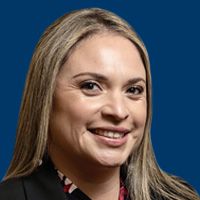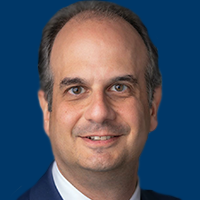Addressing Unmet Needs for Triple-Class Refractory Multiple Myeloma
Current unmet needs surrounding the management of patients with triple-class refractory multiple myeloma with newer novel therapies.
EP: 1.Reacting to Relapsed/Refractory Myeloma in the Clinic
EP: 2.Assessing and Managing Relapsed/Refractory Myeloma
EP: 3.Establishing a Treatment Plan for Triple-Class Refractory Myeloma
EP: 4.Selinexor With Backbone Therapy for Triple-Class Refractory Multiple Myeloma
EP: 5.Melflufen and Dexamethasone for Triple-Class Refractory Multiple Myeloma
EP: 6.Single-Agent Belantamab Mafodotin for Triple-Class Refractory Multiple Myeloma
EP: 7.Individualizing Therapy for Triple-Class Refractory Myeloma
EP: 8.Addressing Unmet Needs for Triple-Class Refractory Multiple Myeloma
EP: 9.Novel Therapies Under Study for Triple-Class Refractory Multiple Myeloma
Suzanne Lentzsch, MD, PhD: After receiving approval for selinexor, Blenrep [belantamab mafodotin], and melflufen, we have luckily also received approval for CAR [chimeric antigen receptor] T cells. Hopefully we’ll receive approval for BCMA BiTEs [bispecific T-cell engagers]. That will change the outlook of patients in the fourth and fifth relapses. Those therapies, especially when used earlier, can absolutely prolong the responses of patients with multiple myeloma. With CAR T cells, we have a very promising new tool available to us. If we are using those immunotherapies when patients still have active T cells, we might see much better response rates than we see right now. The progression-free survival with CAR T-cell therapy is currently around 2 to 11 months, so this is in a phase where patients already have an exhausted immune system based on multiple prior treatments. If we use those drugs much earlier, that would allow us to have a much longer progression-free survival in the third or fourth relapse.
Peter Voorhees, MD: An unmet need in triple-class refractory myeloma is improving the durability of responses to these new therapies. That includes the BCMA-targeted strategies, belantamab mafodotin and idecabtagene vicleucel, melphalan flufenamide with dexamethasone, and selinexor-based regimens. In the BCMA-targeted space, looking at next-generation CAR constructs makes a lot of sense. As an example, we’ll see more combination therapies in that space incorporating other therapies that have an immunostimulatory effect with CAR T cells. Understanding mechanisms of resistance to these agents is going to be important. Similarly, understanding whether that resistance is conferred to other therapies in the same class is important. For example, if a patient relapses after idecabtagene vicleucel therapy, what’s the likelihood that they’re going to respond to belantamab mafodotin or the other way around? Looking at that is going to be incredibly important.
Understanding mechanisms of resistance for melphalan flufenamide and selinexor is also going to be incredibly important. You’re going to see more and more data emerging on combination therapies with selinexor. We already talked about the BOSTON trial, but there are numerous combinations being developed with selinexor that look very promising, including carfilzomib and daratumumab. With regard to melphalan flufenamide, there are very interesting early data with bortezomib-based therapy as well as daratumumab-based therapy. As far as those agents are concerned, you’re going to see more and more 3- and 4-drug combinations in earlier relapse.
Transcript Edited for Clarity



